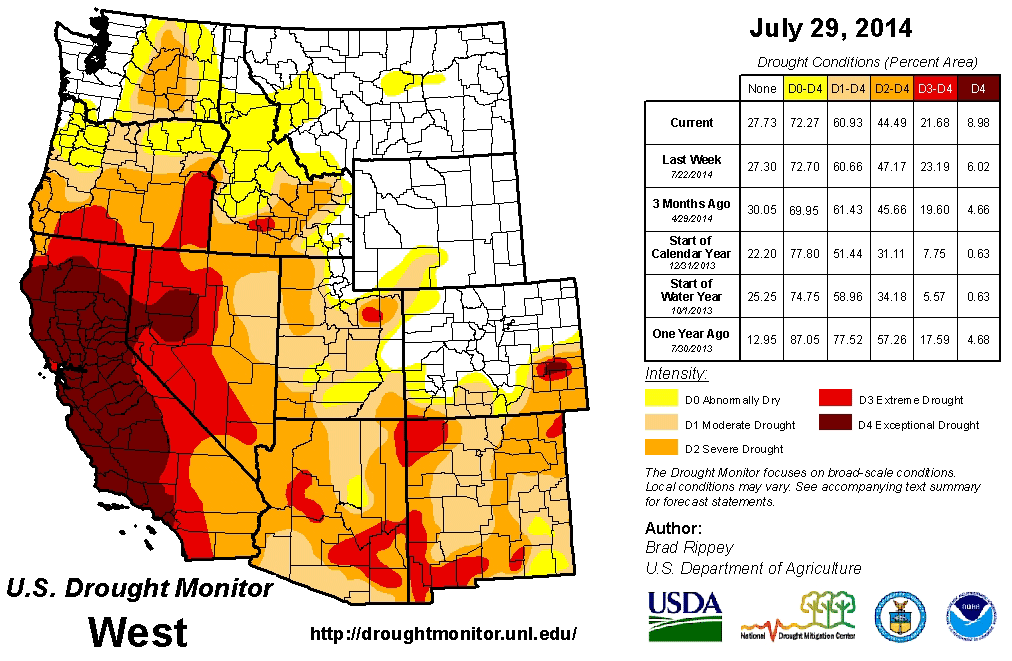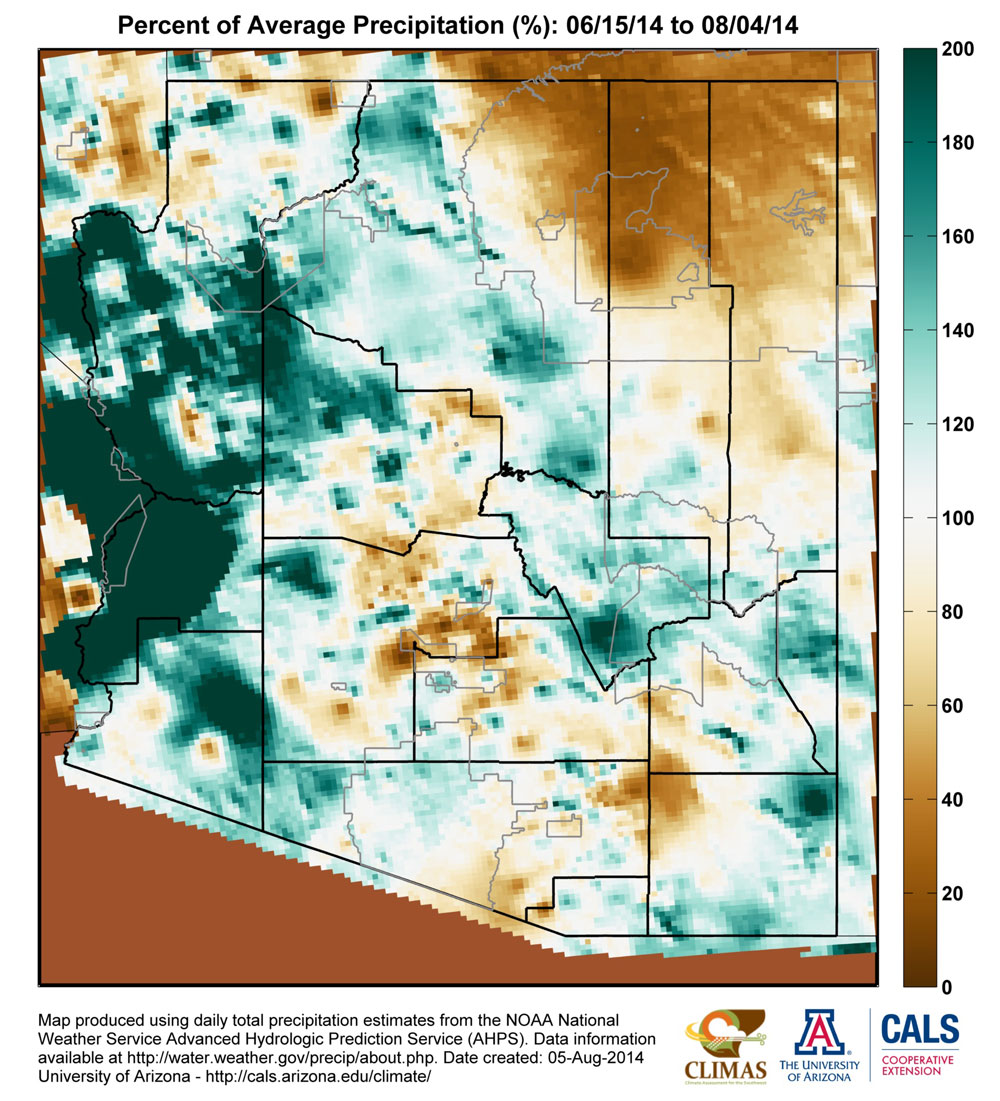Notes from an Applied Climatologist: El Niño & Drought Q&A
There’s been a lot of talk about El Niño and ‘busting the drought'. How much can El Niño help with ongoing drought conditions in the West?
The El Niño event struggling to form in the Pacific Ocean has been a ray of hope for many of us across the Southwest for several months now looking for some relief from both short and long-term drought conditions that have plagued California, Arizona and New Mexico for several years now. The important thing to remember is that we can only expect *some* relief in a best case scenario with a strong El Niño event delivering abundant precipitation across the Southwest over the winter season. Current drought conditions have accumulated over years and cannot be erased by a single wet season. We can look back at drought indices around the time of the last strong El Niño event over the winter of 1997-1998.
 For a detailed look at Standardized Precipitation Index (SPI) in Arizona - Click Here
For a detailed look at Standardized Precipitation Index (SPI) in Arizona - Click Here
Wet conditions were observed across Arizona over several months which dramatically improved short-term drought conditions (months to seasons), but longer term drought conditions (seasons to years) were still present and quickly intensified as dry conditions returned the following year. At this point we will need several years of average to above-average precipitation over each season to alleviate long-term drought conditions. An El Niño winter with above-average precipitation would help, but is not a silver bullet at this point.
Significant amounts of rain fall during the monsoon, why doesn’t that solve our drought problems?
Monsoon precipitation is a critical water source to many ecosystems and agricultural activities (e.g. ranching), and is an important determinant of drought status during the summer across the Southwest. If monsoon precipitation is spotty, late in onset, and overall below-average, short-term drought conditions can quickly intensify across Arizona and New Mexico. As far as long-term drought conditions that evolve over multiple seasons or years, a single monsoon season typically has little impact.
Dry conditions during the summer can contribute to long-term drought impacts like stress in trees and reductions in surface water streamflows, but average to wet conditions often don’t contribute much to improvements. Monsoon precipitation typically falls in torrents of heavy rain associated with isolated storms, leaving a patchwork of runoff and wet soil that quickly evaporates back into the atmosphere. Occasionally, large-scale flooding events during the summer can lead to high flows in streams and contributions to reservoirs and subsequent relief from long-term drought impacts, but these events are rare and unpredictable.

Michael Crimmins is an Associate Professor and Climate Science Extension Specialist in the Department of Soil, Water and Environmental Science


